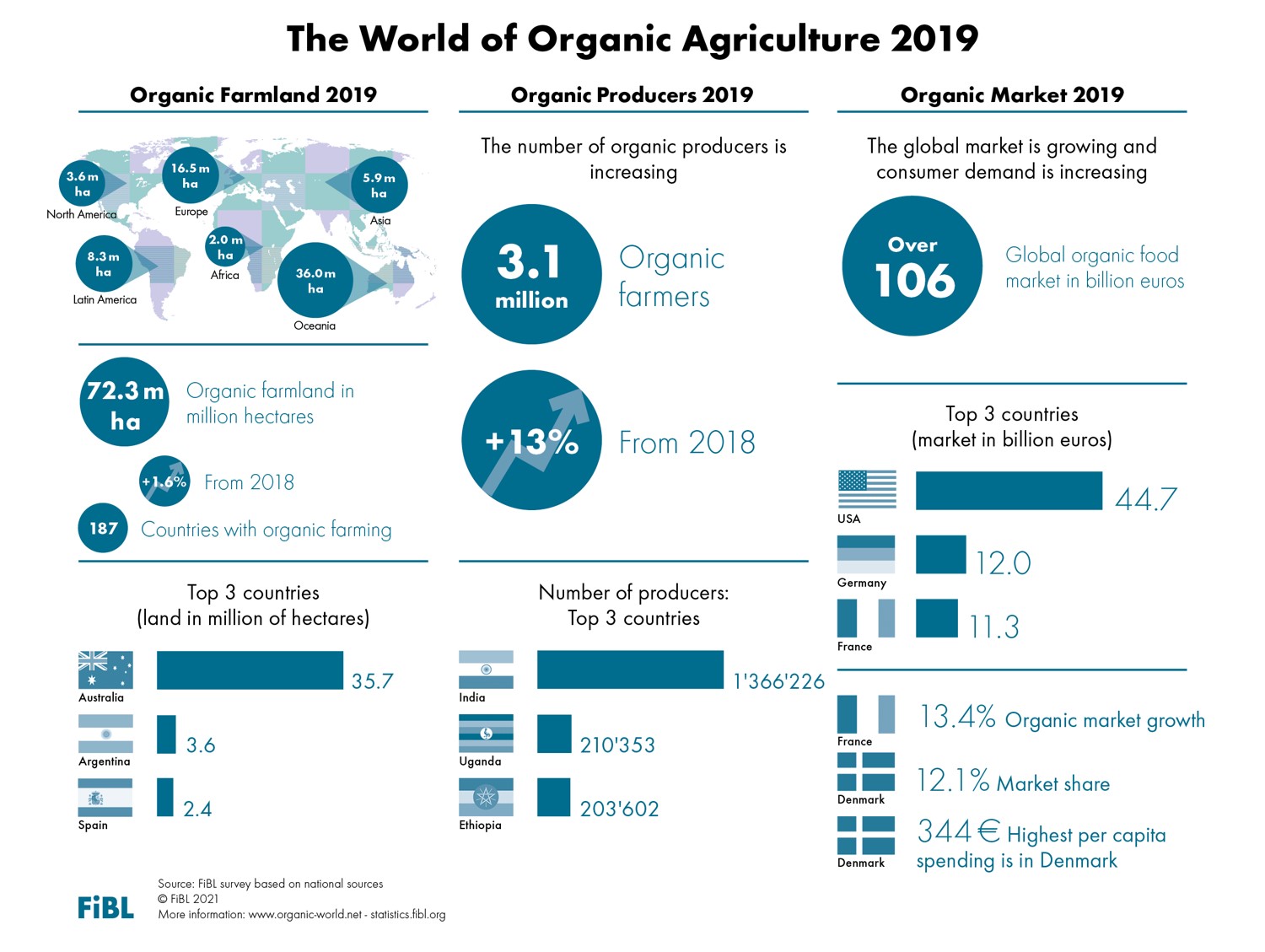More than 178 million acres of farmland are organic worldwide
According to the latest Research Institute of Organic Agriculture (FiBL) survey on organic agriculture worldwide, organic farmland increased by 2.71 million acres, and organic retail sales continued to grow, as shown by the data from 187 countries (data as of the end of 2019). The 22nd edition of the study “The World of Organic Agriculture” published by FiBL and International Federation of Organic Agriculture Movements (IFOAM) shows a continuation of the positive trend seen in the past years.
Global organic market continues to grow
The global market for organic food reached $122 billion in 2019. The United States is the leading market ($54.5 billion), followed by Germany ($14.6 billion) and France ($13.7 billion). In 2019, many major markets continued to show strong growth rates; for example, the French market increased more than 13%. Danish and Swiss consumers spent the most on organic food ($419 and $412 per capita, respectively). Denmark had the highest organic market share, with 12.1 percent of its total food market.
3.1 million organic producers worldwide
In 2019, 3.1 million organic producers were reported. India continues to be the country with the highest number of producers (1,366,000), followed by Uganda (210,000), and Ethiopia (204,000). The majority of small-scale producers are certified in groups based on an internal control system.
Steady increase of organic farmland
A total of 178 million acres were organically managed at the end of 2019, representing a growth of 1.6 percent or 2.71 million acres compared to 2018. Australia has the largest organic agricultural area (88.2 million acres), followed by Argentina (9.1 million acres), and Spain (5.9 million acres). Due to the large area of organic farmland in Australia, half of the global organic agricultural land is in Oceania (88.9 million acres). Europe has the second largest area (40.7 million acres), followed by Latin America (20.5 million acres). The organic area increased in all continents compared to 2018, except in Asia (mainly due to a drop in organic farmland reported from China) and Oceania.
10% or more of the farmland is organic in 16 countries
Globally, 1.5% of farmland is organic. However, many countries have far higher shares. The countries with the largest organic share of their total farmland are Liechtenstein (41.0%), Austria (26.1%) and São Tomé and Príncipe (24.9%). Some states in India are or aspire to be 100% organic in the coming years. In sixteen countries, 10% or more of all agricultural land is organic.
COVID-19 has resulted in a significant increase in demand for organic products in many countries but also challenges: “We expect to see the effect of the pandemic on the development of the sector with the 2020 data to be ready in a year’s time,” says Helga Willer, who is in charge of the yearbook at FiBL.
“The World of Organic Agriculture” can be ordered or downloaded at shop.fibl.org (order number 1150). Graphs and infographics can be downloaded at www.organic-world.net/yearbook/yearbook-2021.html.









